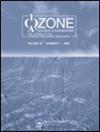微泡臭氧氧化降低铜绿微囊藻的毒性
IF 1.4
4区 环境科学与生态学
Q3 ENGINEERING, ENVIRONMENTAL
引用次数: 2
摘要
摘要:本研究旨在研究微泡臭氧氧化去除有毒蓝藻——铜绿微囊藻。3.47 mg O3 L−1的微泡臭氧化(30 min)使M. aeruginosa浓度从1.5 × 107降至0.8 × 107 cell mL−1。然而,微泡臭氧化后对大水蚤(<24 h)的急性毒性(48 h)明显增加,可能是由于细胞内微囊藻毒素(MCs)的释放。考虑到毒性MCs的释放,在环境相关浓度(1.74 × 106细胞mL−1)下对微泡臭氧化进行优化。0.26 ~ 1.92 mg O3 L−1的微泡臭氧氧化30 min,对铜绿假单胞菌的去除率为26% ~ 83%,对D. magna无急性毒性。此外,投喂D. magna后,48 h的去除率从85%提高到100%。这些结果表明,微泡臭氧化,可能与D. magna生物操作相结合,是一种很有前途的控制环境水中有毒蓝藻的工具。本文章由计算机程序翻译,如有差异,请以英文原文为准。
Toxicity Reduction of Microcystis Aeruginosa Using Microbubble Ozonation
ABSTRACT The aim of this study was to investigate microbubble ozonation for the removal of toxic cyanobacteria, Microcystis aeruginosa. The microbubble ozonation (30 min) at 3.47 mg O3 L−1 decreased the M. aeruginosa concentration from 1.5 × 107 to 0.8 × 107 cell mL−1. However, the acute toxicity (48 h) to Daphnia magna (<24 h old) was considerably increased after the microbubble ozonation, possibly owing to the release of intracellular microcystins (MCs). Considering the release of toxic MCs, the microbubble ozonation was optimized at an environmentally relevant concentration (1.74 × 106 cell mL−1) of M. aeruginosa. Microbubble ozonation at 0.26–1.92 mg O3 L−1 for 30 min removed M. aeruginosa by 26 to 83% without any acute toxicity on D. magna. Moreover, D. magna feeding enhanced the removal rate from 85 to 100% for 48 h. These findings suggest that microbubble ozonation, possibly combined with D. magna biomanipulation, can be a promising tool to control toxic cyanobacteria in ambient water.
求助全文
通过发布文献求助,成功后即可免费获取论文全文。
去求助
来源期刊

Ozone: Science & Engineering
环境科学-工程:环境
CiteScore
5.90
自引率
11.10%
发文量
40
审稿时长
2 months
期刊介绍:
The only journal in the world that focuses on the technologies of ozone and related oxidation technologies, Ozone: Science and Engineering brings you quality original research, review papers, research notes, and case histories in each issue. Get the most up-to date results of basic, applied, and engineered research including:
-Ozone generation and contacting-
Treatment of drinking water-
Analysis of ozone in gases and liquids-
Treatment of wastewater and hazardous waste-
Advanced oxidation processes-
Treatment of emerging contaminants-
Agri-Food applications-
Process control of ozone systems-
New applications for ozone (e.g. laundry applications, semiconductor applications)-
Chemical synthesis.
All submitted manuscripts are subject to initial appraisal by the Editor, and, if found suitable for further consideration, to peer review by independent, anonymous expert referees.
 求助内容:
求助内容: 应助结果提醒方式:
应助结果提醒方式:


